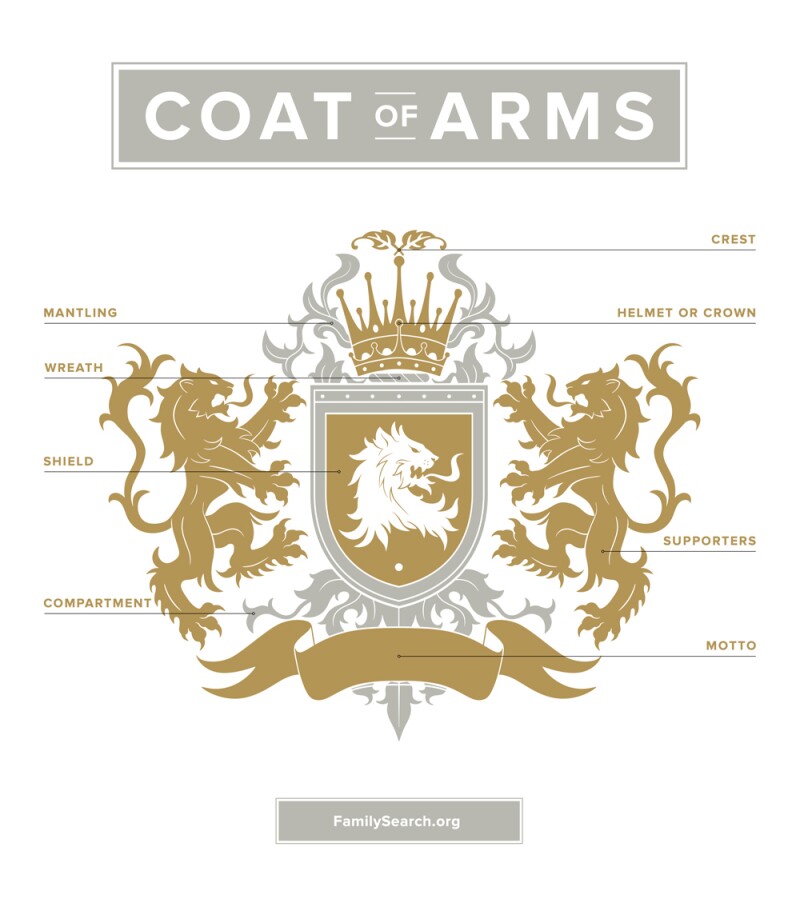Do you have a family crest? Have you ever wondered if it’s real or just something made up? Have you ever pondered the meaning behind your family crest? While family crests may be prevalent in some cultures, it doesn’t mean that all family crests are real. In this article, we will explore the history of family crests, the meaning behind them, and whether they are real or not. So read on to learn more about this fascinating topic and whether or not you can trust your family crest!
Origin and History of Family Crests

Family crests are symbols that have a long history. They have been used by families and individuals to identify themselves and their belongings since the 11th century. These symbols, which can be found on clothing, buildings, and documents, vary greatly in design, color, and meaning. Though they are often associated with royalty and privilege, they have been adopted by people of all social classes. The origin of family crests is unclear, but they are thought to have originated in the 11th century. During this time, crests were used to denote a family’s wealth and power. They were typically crafted from metal and decorated with intricate designs. The designs often included a family’s coat of arms, which was a symbol of their rank and status. Over time, the use of family crests spread throughout Europe and eventually to other parts of the world, where they became popular among the wealthy and influential. Today, family crests are still used to symbolize a family’s heritage and identity. Many people choose to wear them on clothing or jewelry to show their pride in their heritage. Others may choose to display them in their homes or on signage. Regardless of the use, family crests remain an important part of
Symbology of Family Crests

Symbology of family crests is an important factor to consider when researching your family’s history. Crests are symbols that can be used to identify a family’s origin, their achievements, and even their personality traits. They’re a visual representation of the family’s identity and their values, and often represent a shared heritage of the family members. Generally, the symbols found in a crest are related to heraldry and relate to the family’s past and traditional values. Common symbols found in crests include animals, plants, tools, and objects, which can all have special meaning to the family. For example, a crest may include a lion, which can symbolize strength, courage, and protection. A crown may signify leadership and status, while a boat may represent a family’s seafaring heritage. Symbols can also be used to represent particular achievements, such as a shield to represent a successful battle or a sash to represent an honor. By researching the symbols found in a family crest, one can gain a great insight into the family’s history, values, and identity.
How to Find Your Family Crest

If you are curious to know whether or not your family has a crest, then you are in luck. There are a few ways to go about finding out if your family has a crest, which includes researching the history of your family, speaking to older relatives, and searching online. One way to find out if your family has a crest is to research your family history. This is a great way to start and can be done by looking through old family records and documents, as well as visiting archives and libraries. This can be time consuming, but it is worth it to find out if your family has a crest. Another way to find out if your family has a crest is to speak to older relatives. If you have family members who are knowledgeable about your family’s history, then this could be a great way to find out if your family has a crest, as they may know if there is a crest associated with your family’s history. Finally, you can search online to find out if your family has a crest. There are many websites that offer family crest search services, which can help you find out if your family has a crest. You can also find websites that specialize in selling family crests and
Popular Family Crests in History

Popular family crests have been seen throughout history in various forms, including military decorations and coats of arms. Many of the most iconic crests have been adopted by families to represent their power and wealth. For example, the crest of the House of Plantagenet, which was a medieval English dynasty, featured a crowned lion holding a staff and a shield displaying three gold lions on a red background. This crest is still used today as a symbol of the family’s power and influence. The crest of the House of Tudor, a powerful dynasty in England’s history, featured a white rose with a crown, a red dragon, and a greyhound. This crest is still seen today on many buildings and monuments throughout the UK. Additionally, the crest of the House of Stuart, a powerful family in Scotland, featured a crowned lion holding a sword and a shield with a red lion rampant on a gold background. This crest is still used as a symbol of strength and nobility today. These are just a few examples of popular family crests that have been used throughout history and still remain in use today.
Preservation of Family Crests

Preserving a family crest is about more than just keeping a part of one’s heritage safe; it is about preserving a symbol that connects a family’s past with its present and future. There are many ways to ensure that a family crest is preserved correctly, so that it can be passed down through generations. Digitization of the crest is one of the best methods of preservation. By digitizing the crest, it can be stored in a secure and accessible format, allowing it to be accessed by any member of the family at any time. Additionally, many families opt to have their crest professionally framed, so that it can be displayed prominently in the home. Professional framing services can also add an extra layer of protection to a family crest by providing a protective coating that will help to keep the crest safe from moisture or other environmental factors. Finally, some families choose to have a replica of the crest made and placed in a family album or scrapbook, which can be displayed and shared with future generations.




